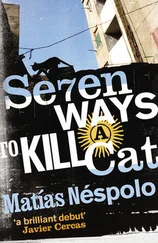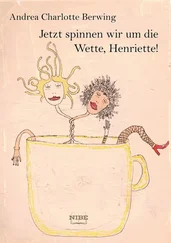William Diehl - Seven ways to die
Здесь есть возможность читать онлайн «William Diehl - Seven ways to die» весь текст электронной книги совершенно бесплатно (целиком полную версию без сокращений). В некоторых случаях можно слушать аудио, скачать через торрент в формате fb2 и присутствует краткое содержание. Жанр: Триллер, на английском языке. Описание произведения, (предисловие) а так же отзывы посетителей доступны на портале библиотеки ЛибКат.
- Название:Seven ways to die
- Автор:
- Жанр:
- Год:неизвестен
- ISBN:нет данных
- Рейтинг книги:5 / 5. Голосов: 1
-
Избранное:Добавить в избранное
- Отзывы:
-
Ваша оценка:
- 100
- 1
- 2
- 3
- 4
- 5
Seven ways to die: краткое содержание, описание и аннотация
Предлагаем к чтению аннотацию, описание, краткое содержание или предисловие (зависит от того, что написал сам автор книги «Seven ways to die»). Если вы не нашли необходимую информацию о книге — напишите в комментариях, мы постараемся отыскать её.
Seven ways to die — читать онлайн бесплатно полную книгу (весь текст) целиком
Ниже представлен текст книги, разбитый по страницам. Система сохранения места последней прочитанной страницы, позволяет с удобством читать онлайн бесплатно книгу «Seven ways to die», без необходимости каждый раз заново искать на чём Вы остановились. Поставьте закладку, и сможете в любой момент перейти на страницу, на которой закончили чтение.
Интервал:
Закладка:
“There’s a third set of prints.”
“Correct. These appear to be made by a man’s shoes and we’ll label them Subject C. Subject B will be labeled in white. And C’s prints partly obscure the prints of Subject A made yesterday afternoon and the entry prints made by Subject B late yesterday. These prints also were made after Wilma Kearney left yesterday and the entry prints made by Subject B but not the exit prints made by Subject B.
“Conclusion: Wilma Kearney vacuumed this area about three p.m., Thursday, the 25th. Sometime after that, Subject B entered the apartment and went into the library. Then they were followed by Subject C, whom we will assume for the moment was Raymond Handley, who went toward the bedroom. Subject B then left the library and exited the apartment before Mrs. Kearney arrived this morning. Subject C, we are assuming, is still in the apartment.”
Cody marked the various sets of footprints with different colored Post-its and Bergman took pictures of them.
“Okay,” Cody said to Bergman, “let’s get to the main event.”
They entered the apartment and switched on the lights. As they entered the small foyer leading into the library Bergman fell back two or three steps, looking like he had been slapped in the face. “Oh my God!” he gasped.
Cody’s expression never changed. He squatted down Indian-style, resting one arm across his knees.
“Hello, Raymond,” he said quietly, reaching for his cell phone. “I have a feeling we’re going to get to know you real well.”
4
As was his custom, Max Wolfsheim sat in his favorite easy chair sipping his morning cup of coffee. The New York Times was spread out on the ottoman in front of him and he leaned forward, his glasses perched on the end of his nose, his pudgy fingers scanning each page as he speed-read every article. Heavy-set and bald, he was huddled in an old bathrobe, his feet stuffed into a pair of fleece-lined slippers, waiting for the place to heat up.
It was a comfortable though sparsely furnished room. The furniture was old and worn. A large Peruvian rug covered the hardwood floors. A waist high bookcase ran the length of one wall, stuffed haphazardly with books and magazines. Except for a 42-inch flat-screen TV in one corner, it was the kind of room one might expect of an old bachelor: small, utile, and unimpressive.
Except for the wall behind him. A wall that changed the character of the room.
Instead of paintings or artwork, the wall was decorated with framed objects, all different sizes, carefully mounted, each with a small label in the right hand corner describing the object and a date. All were morbid trophies Max Wolfsheim had gathered in his forty years as an internationally known forensic pathologist. They helped abolish the nightmares that sometimes accompanied the most heinous of the crimes he had investigated. He rarely looked at them but each was peculiarly personal. Like panaceas for a bad disease, each was a reminder that there are human beings among us who are capable of the most malevolent acts against humanity:
A clod of soil from the unearthed grave of a nun in Central America who had been buried alive. May 12, 1992.
The gas mask he had worn while investigating a sabotage gas leak in Bhopal, India, which had unleashed a deadly cloud of methyl isocyonate gas that killed more than 4,000 people as they slept. December 2, 1984.
Part of a note written by a madman who had started a club called “Cannibals Anonymous,” had killed more than a dozen youngsters, sodomized and dismembered them, pickled their flesh, and later had eaten them. 1984–1992.
A hat abandoned in the chaotic aftermath of a gas attack in a Tokyo subway that killed a dozen and left thousands to suffer permanent flashbacks. March 20, 1995.
One of eighteen Barbie dolls with their heads twisted backwards and left in the arms of the victims of a predator who called himself “Freaky Freddie.” 1982–1996.
These were just a few of the displays that had earned a place on Max Wolfsheim’s wall of shame, having pierced his calm, normally impenetrable, exterior and struck a blow to his heart.
In the center of the display was a framed motto printed on rice paper by a calligrapher:
A cop needs a good pathologist to do his job, just as a pathologist needs a good cop to complete his. Max Wolfsheim
It was the only place his name appeared. There were no references to the work he had done on these cases, no scrapbooks filled with articles about him, not a single photograph of him anywhere in the apartment. The furniture, such as it was, faced away from the wall.
The adjoining room, his bedroom, was as modest: a bed, a night table and reading lamp, and a desk in one corner with a laptop computer and a 120 gigabyte external hard drive on which was stored all the research materials and photos he had gathered through the years.
At 8:20 Max’s phone rang. He looked up and scowled, then went back to his reading. On the fourth ring the answering machine clicked on. It was Cody’s voice.
“Answer the phone, Old Man. I need you.”
He reached over to an end table and snatched up the phone.
“This better be good, Kid,” he growled. “I got a nine-thirty lecture at NYU.”
“Reschedule.”
Cody was still squatting as he described the scene:
Raymond Handley was seated in an antique chair which was in the center of the room. There was a table next to the chair with an old-fashioned glass half full of an amber-colored liquid. Cody judged him to be between five-nine and six-feet, his body well-toned. He had once been handsome. Now his body was gray and his head was leaning slightly forward and cocked to one side. His eyes were slits, staring sightlessly at some fixed point on the floor.
He was stark naked.
There was a deep, open gash running from under his right jaw to just under his left ear and a towel tied around his neck hanging loosely under the wound. There was also a small rubber handball stuffed in his mouth, tightly tied in place with a white cloth.
Each of his hands was handcuffed at the wrists to separate arms of the chair. And each of his legs was cuffed to separate legs of the chair.
“And here’s the kicker,” Cody said.
“There’s a kicker?” Wolfsheim said with surprise.
“Except for a couple of spots on the towel under his chin, there’s no blood.”
“No blood?”
A few moments of silence.
“Okay, Kid, we’re in business.”
“I just saved myself a grand,” Cody said with a laugh.
“And cost me one,” Wolfsheim answered and hung up.
From the bedroom door, Bergman said, “Cap? I think you ought to take a look at this before you go.”
Cody walked carefully on an angle to the bedroom door, putting one foot in front of the other beside Bergman’s tracks. The room was painted pale blue and everything in the room was expensive, from the teak frame and headboard of the king sized bed, to the matching end tables beside it, to the large dresser and armoire. The doors to the closet were mirrored and one was half open. Handley’s clothes were meticulously lined up. Suits, then sports jackets, slacks, and shirts, each an inch apart. A shirt, underwear, and socks were in a laundry basket in one corner of the closet.
There was a wooden valet near the bed with a cashmere jacket, dark gray slacks, and a red tie hanging on it. His alligator wallet, Rolex watch, some coins, keys, and a gold chain with a St. Christopher pendant on it were lined up in the tray. A pair of expensive black shoes were under it, also neatly placed side by side.
“Well, Wilma did say he was neat,” Cody commented.
“That’s an understatement. I checked the wallet. Hundreds, fifties, twenties, tens, fives, ones, all in descending order. Nine hundred and twenty-eight bucks.”
Читать дальшеИнтервал:
Закладка:
Похожие книги на «Seven ways to die»
Представляем Вашему вниманию похожие книги на «Seven ways to die» списком для выбора. Мы отобрали схожую по названию и смыслу литературу в надежде предоставить читателям больше вариантов отыскать новые, интересные, ещё непрочитанные произведения.
Обсуждение, отзывы о книге «Seven ways to die» и просто собственные мнения читателей. Оставьте ваши комментарии, напишите, что Вы думаете о произведении, его смысле или главных героях. Укажите что конкретно понравилось, а что нет, и почему Вы так считаете.












